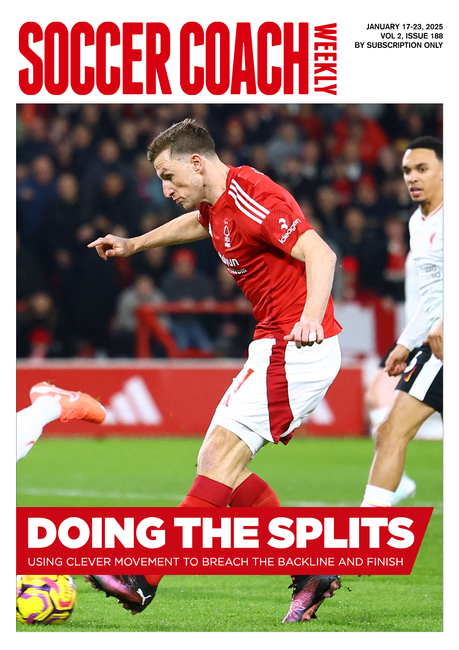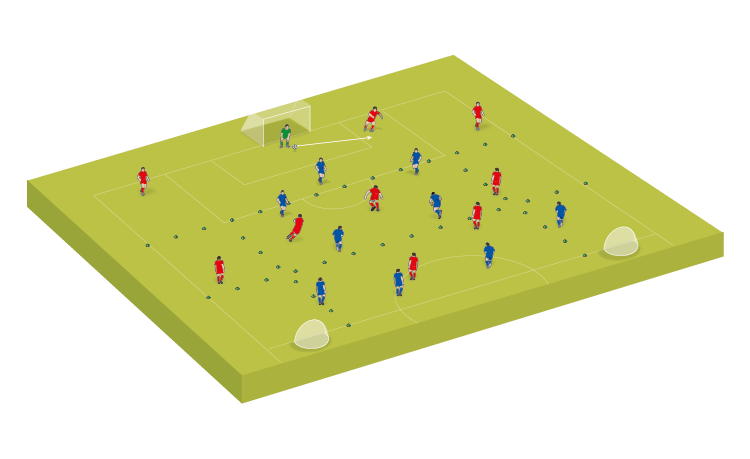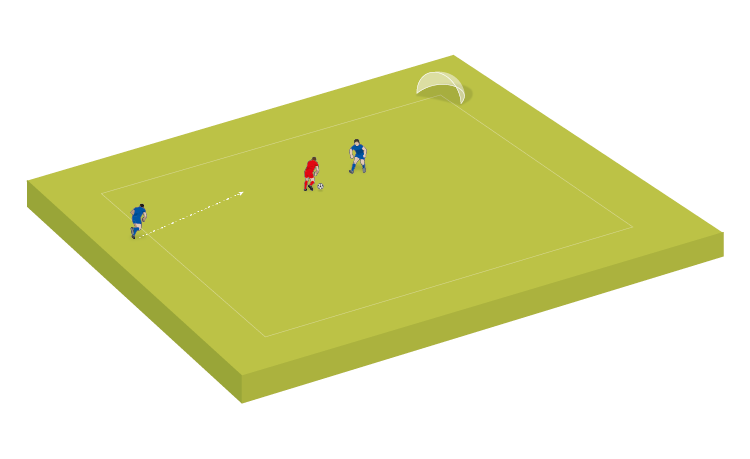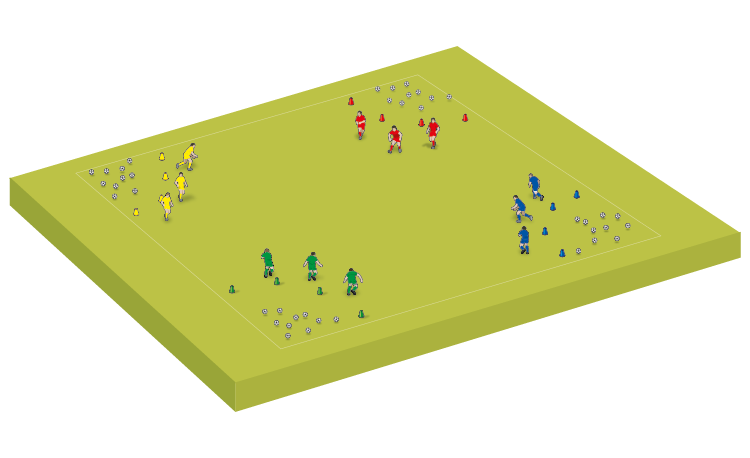How to manage player behaviour in sessions
Disruptive and inattentive squad? James Tolley may well have the answers...
When I took over a new team, it got me thinking about managing behaviour within sessions.
Since the team was transitioning from one coach to another, I wanted to make the impact on behaviour and stress levels minimal.
Before learning the methods, it is important to understand that there are many reasons for a loss of concentration, which is often labelled “bad behaviour".
The first reason is a lack of stimulation for the brain. We can see this all the time in classrooms or meeting rooms all around the world, when someone begins to fidget. In a football session, this can manifest itself as playing their own games with the ball.
Another reason for this loss of focus could be a need for attention. When someone is in a group, they may not be having their needs met and will seek ways of doing this by gaining the attention of whoever they can - commonly known as “acting out”.
It is important everyone in your sessions feels appropriately challenged, stimulated mentally and feels they are being given enough attention as an individual.
I believe in prevention rather than cure. It is better to set out processes within sessions that prevent players getting to the stage of causing a disruption, than have to stop and punish them when they do.
"It’s important everyone feels challenged and given enough attention..."
So what are the methods I use?
Firstly, I’m a believer in the “whole-part- whole” session structure, which uses a small- sided game as an arrival activity.
I’ve found this gets the players moving and thinking and they enjoy the sessions a lot more. Plus, when they are switched on straight away in a game, it tends to carry through into the session.
Starting the session with a game also brings some context to whatever you want to coach within your session, which means the learning the players will be doing will be longer lasting and more useful – win, win!
Moreover, having this game gives you as the coach the chance to set some extra equipment up, or have conversations with players and give them the time and attention they potentially need.
This is a great way to prevent distraction early on and also will allow you to identify any wellbeing issues.
The second method is to make the session game-like and realistic, with high amounts of ball-roll time and player engagement, to ensure they are always focused on something they enjoy. This sounds simple, but simply removing lines from sessions isn’t enough to achieve this.
When planning a session to be game-like, ask yourself: “Is this actually doing what I want it to be?”, and “What would I think of this if I was a player within the session?”.
Doing this also allows you to refine the session you are working on and ensures you can keep your interventions to a minimum, as you will have specific coaching points to give and can keep the players playing for longer.
Occasionally, I will use a tactics board within my sessions to talk through a practice. When I do this, I make sure to ask players for their input, to keep them engaged and give them some ownership of the activity. This also gives players a chance to shape the rules, shapes and so on.
It is important, though, that these conversations are short and effective, and do not interfere too much with ball roll-time.
Related Files
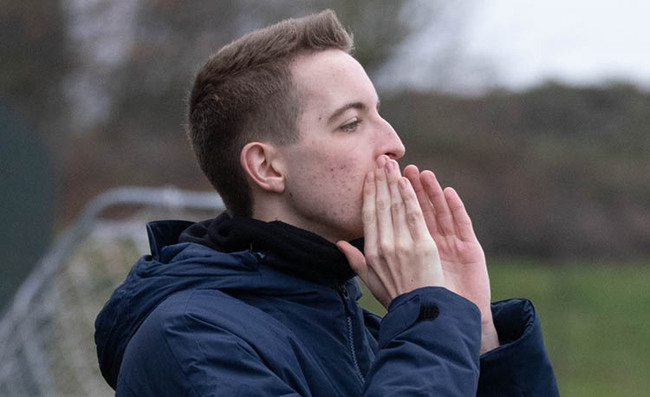
If all players are able to have some form of input, that is fantastic - but if it becomes mostly listening to the coach or a select few players, it is probably time to move on.
When you need to call the players in for a drink or a talk, there are a few things you can use to limit disruption. I personally like to use a whistle to stop play. It’s more game- like, but also short and sharp and the players have to react to it.
I then make it clear what I want the players to do with command-style instructions about getting a quick drink, then getting back into me for the next task.
There are two main ways of dealing with a drinks break – you can be super time-efficient and give any instructions as the players take on water, or you can give them the break as a chance for them to have a chat and relax.
Personally, I don’t intervene with a drinks break because it allows the players to have their own space within the sessions. However, you may need to use it differently if time is not on your side.
On their way in to you, players will want to play with the ball. You can go down the route of asking them to leave the balls where they are if you like - I personally find it okay for them to bring them in providing they are not loud or disruptive with them.
"I like to use a whistle to stop play. It’s more game-like and players have to react to it..."
Playing with a ball doesn’t necessarily mean they’re not listening, either. With my team, they all choose whether they bring the ball with them or not.
They are given this choice as they are mature enough to decide whether it is a distraction for themselves or others. Most choose to leave the ball alone to help their teammates listen.
Another question is where everyone leaves their drinks. I like to set out an area (which the younger players call the ’kit room’) where all the team’s stuff is left.
This is the place you can call players into, and if you leave the bag of balls elsewhere, there are no extra distractions from what you and the other players are discussing.
With my own team, this is their space with their things. It is where they can have their drinks break and a chat. Imagine it being like a common room, or a players’ dressing room away from the coaches.
The final point I want to make on managing behaviour is about player-coach relationships.
If you can build and sustain a positive, praise-based relationship with your players, allied to mutual respect, I would imagine incidents of poor behaviour will be few and far between.
If the environment is right, everyone can learn and enjoy the session, and won’t feel the need to attract extra attention.
If players have their basic needs met within the session, are appropriately challenged and stimulated as well as feel heard and supported as an individual, then it is unlikely they will become unfocused.
I hope these tips help, and can make sessions with your players stress-free and more enjoyable!
Newsletter Sign Up
Coaches Testimonials

Gerald Kearney, Downtown Las Vegas Soccer Club

Paul Butler, Florida, USA

Rick Shields, Springboro, USA

Tony Green, Pierrefonds Titans, Quebec, Canada
Subscribe Today
Discover the simple way to become a more effective, more successful soccer coach
In a recent survey 89% of subscribers said Soccer Coach Weekly makes them more confident, 91% said Soccer Coach Weekly makes them a more effective coach and 93% said Soccer Coach Weekly makes them more inspired.
*includes 3 coaching manuals
Get Weekly Inspiration
All the latest techniques and approaches
Soccer Coach Weekly offers proven and easy to use soccer drills, coaching sessions, practice plans, small-sided games, warm-ups, training tips and advice.
We've been at the cutting edge of soccer coaching since we launched in 2007, creating resources for the grassroots youth coach, following best practice from around the world and insights from the professional game.



